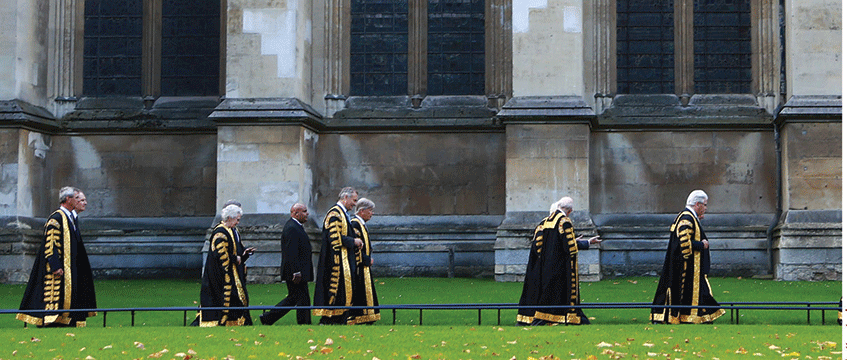When I considered Fraser J’s decision at first instance in the dispute that resulted in the Supreme Court’s decision in Bresco Electrical Services Ltd (in liquidation) v Michael J Lonsdale (Electrical) Ltd [2020] UKSC 25; [2020] PLSCS 117, I concluded: “I think the judgment is correctly decided and, absent a change in the primary legislation, cannot think of any obvious way in which to challenge its conclusions.”
And when concluding my review of the same dispute on appeal, where Coulson LJ agreed with Fraser J on one of the two grounds held to be decisive at first instance, it’s only fair to acknowledge that I didn’t change my mind about the correctness of the decision or that it needed an act of parliament to change the result.
However, it only took Lord Briggs (giving the judgment of the entire Supreme Court) 72 eruditely expressed paragraphs to show the paucity of both my analysis and powers of prediction. Although neither opinion seemed controversial when put pen to paper, I was wrong. Here’s why.
The facts
In August 2014, B entered into a contract with L to provide electrical installation works at St James’s Square in London. By that December, B had stopped attending site and, in the following March, it entered into creditors’ voluntary liquidation. Both parties claimed damages from the other. L argued that B had abandoned the site prematurely, causing L to incur £325,000 of additional costs employing replacement contractors. B claimed £219,000 by way of unpaid fees and lost profits and, in 2018, its liquidators referred B’s claim to adjudication.
The adjudicator did not have time to reach a decision since L applied to court for an injunction restraining B’s ability to adjudicate. L’s arguments centred on the questions of whether insolvency set-off (only the difference between the total of L’s claims against B and B’s cross-claims against L is payable by whichever party owed the greater amount) meant that (i) the adjudicator lacked jurisdiction to consider the dispute (the jurisdiction issue) and/or (ii) even if there was jurisdiction, adjudication was an exercise in futility since any award would not be enforceable and the court could and should restrain it being enforced by the grant of an injunction until the liquidator had calculated the net balance due after insolvency set-off (the futility issue).
At first instance, Fraser J agreed with L’s arguments on both the jurisdiction and futility issues, and granted the injunction. The Court of Appeal rejected L’s argument on jurisdiction, but maintained the injunction on the basis of futility. Both parties appealed to the Supreme Court in relation to the issue on which they lost on appeal.
The Supreme Court
Lord Briggs rejected both of L’s arguments and provided arguably the most important judicial support for adjudication to date. His judgment may also mark a fork in the judicial road, with the Supreme Court adopting a different approach to the House of Lords – and the support given by Lord Hoffmann in particular for the insolvency regime over other branches of the law – in cases like Stein v Blake [1995] UKHL 11 (the leading authority on insolvency set-off) and Melville Dundas Ltd (in receivership) v George Wimpey UK Ltd [2007] UKHL 18 (which dealt with the interaction of the Construction Act and the insolvency regime).
Lord Briggs’s judgment is robust to say the least. The adjudicator did have jurisdiction because, even assuming insolvency set-off meant that a net balance was owed by B to L, B’s claims did not “simply melt away”. Rather, they maintained a separate identity for many purposes, not least the ability of B’s liquidators to bring a claim in breach of contract against L. Any suggestion that Stein reached a different conclusion was wrong. Indeed, in his judgment, Lord Hoffmann had acknowledged that the “cross-claims must obviously be considered separately for the purpose of ascertaining the balance. For that purpose they are treated as if they continued to exist.”
The futility argument received equally short shrift. The right to refer a dispute to adjudication was both statutory (under the Construction Act) and contractual (because the contract between B and L complied with the Act’s terms). And Lord Briggs stressed that the courts rarely grant injunctions to restrain the exercise of statutory and/or contractual rights: “Injunctive relief may restrain a threatened breach of contract but not, save very exceptionally, an attempt to enforce a contractual right, still less a statutory right.”
Lord Briggs also disabused any suggestion that adjudication’s only purpose is to enable one party to obtain summary enforcement of a right to interim payment in order to protect its cashflow. While conceding that was one of its purposes, he stressed that “in the context of construction disputes adjudication, as was always intended, has become a mainstream method of ADR, leading to the speedy, cost effective and final resolution of most of the many disputes that are referred to adjudication. Dispute resolution is therefore an end in its own right, even where summary enforcement may be inappropriate or for some reason unavailable.”
Consequences
This is the most important judicial endorsement of adjudication since it came into force in May 1998. It also drives a proverbial coach and horses through previous decisions on the interaction of the Construction Act and insolvency. I may not have seen it coming, but am excited for what follows in its wake.
Key point
- In a landmark decision, the Supreme Court has upheld Construction Act adjudication over insolvency set-off
Stuart Pemble is a partner at Mills & Reeve











